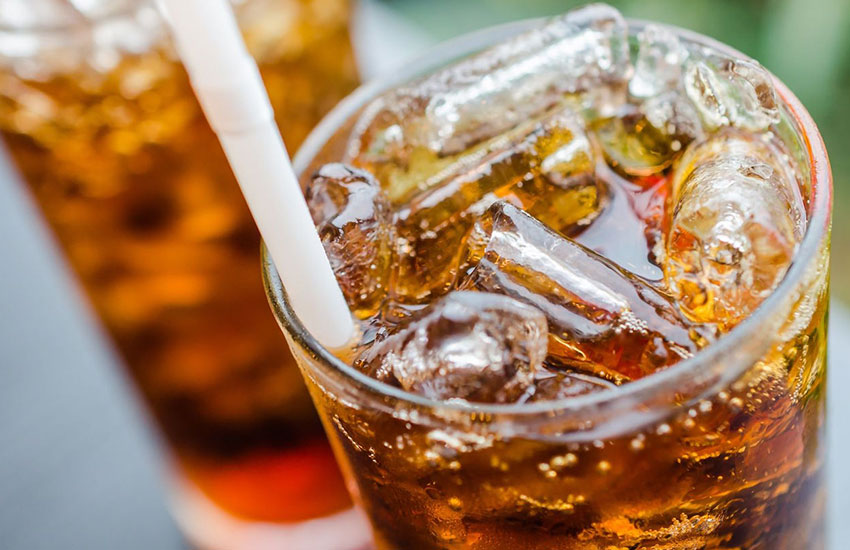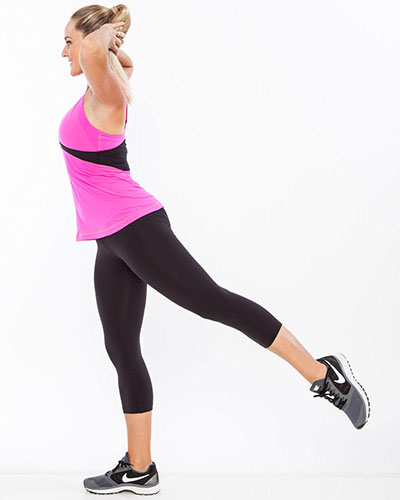Salt therapy – All you need to know
- 24 Feb - 01 Mar, 2024

Our bodies require magnesium for more than 300 chemical reactions, including keeping the heart rhythm steady and regulating blood sugar levels, but in addition to its health benefits, this nutrient may also aid in weight loss and body shaping. In 2013, a study in the Journal of Nutrition found that higher magnesium intake was associated with lower levels of fasting glucose and insulin (markers related to fat and weight gain), and one study from England found that taking a magnesium supplement may have some beneficial effects on reducing fluid retention during the menstrual cycle, meaning you'll feel less bloated.
The solution: Eat more magnesium-rich foods, such as leafy green vegetables, beans, and nuts or talk to your doctor about taking a supplement. The recommended amount of magnesium for women aged under 30 is 310mg, and 320mg for women 30 and over.

Lack of sleep can have serious consequences on your waistline. According to the American Journal of Epidemiology, women who slept five or fewer hours per night were 32 per cent more likely to experience major weight gain over 16 years than those who got more sleep. Plus, according to another study, when women got four hours of sleep instead of eight, they consumed more than 300 extra calories a day, mostly from fatty foods. Because too little sleep causes an increase in a hormone called ghrelin that stimulates appetite.
The solution: Get the expert-recommended seven to nine hours of sleep a night. To ensure quality slumber, remove distracting electronics from the bedroom; keep your room cool (your body sleeps best at around 65 degrees); avoid caffeine after lunch; and try to maintain the same sleeping schedule, even if it means getting up at the same time on weekends.

Sugary soda, packed with empty calories, is obviously a diet disaster, but even the no-calorie version can expand your waistline. A study published in the journal Obesity found that regular soda was associated with increased waist size and abdominal fat, but diet soda was associated with increased waist size, BMI, and total percentage of fat. One theory that explains why this happens is because the artificial sweeteners in diet soda don't produce the responses your body expects when you eat something sweet. So, the sweet taste of a diet soda triggers a message to your body to expect an influx of energy, which won't arrive since there are no calories in diet drinks. This interferes with your body's hunger signals and causes you to crave and consume additional calories to make up for the lack of calories in diet soda.
The solution: Stop this vicious cycle by making water or unsweetened tea your standard drinks with meals. If you're bored with H20, sweeten it with slices of fruit. Coffee is also fine, but minimise high-calorie additions.

If you've ever felt bloated after a salty meal, it's not in your head. Excess salt causes water to move from your bloodstream into your skin, which is why a daily dose of salty chips will give you a puffy look. Nearly 90 per cent of people consume more than the recommended 2,300mg sodium per day. So even if you're not pouring on the table salt, you're likely getting more sodium than you need through other sources such as canned foods, salad dressing, deli meats, and even some dairy products like cottage cheese.
The solution: Avoid adding salt to your meals. Instead, boost flavour with spices and herbs, many of which have added health benefits as well. Try cooking with delicious flavours like cinnamon, chilli powder, cayenne powder, cumin, ginger, basil, parsley, and rosemary – we promise you won't miss the belly-bloating salt.

Many people turn to steady-state cardio workouts, like long jogs, when trying to slim down. The problem with this approach: a 45-minute run at a consistent pace may help you shed a few pounds at first, but soon your metabolism will adjust and you'll stop burning calories the moment you hop off the treadmill.
Weight training is a better and more effective way to tone your tummy. Lifting weights creates micro-tears in the muscle that consume more energy and burn more calories in the healing process, which can last up to two days after your training session. Particularly, research has found that the most effective workout for fat loss is high-intensity interval training, or HIIT, which raises your heart rate while also taxing your muscles. In fact, one study from the UK found that sprint training helped study participants lose inches from their waist and hips after just two weeks on the program, while another study found that people who exercised with high intensity experienced a 20 per cent decrease in abdominal fat.
The solution: You can create a HIIT program with any sort of exercise, including cardio workouts such as running, swimming, cycling, or rowing, as well as full-body strength workouts.
COMMENTS
kim commented 6 years ago